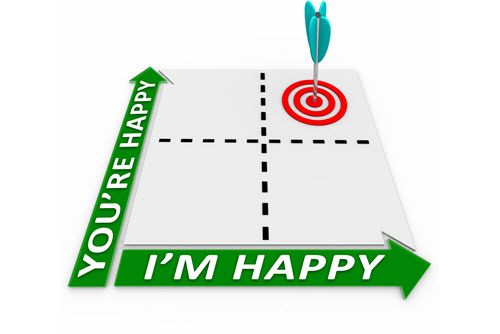Pricing
Are You Discounting or Negotiating?
Are you discounting your project price? Negotiating the project’s price? Are these acceptable in the current economic environment? Here, Rod Burkert answers these questions.

The times are certainly a bit crazy. And we are all doing what we can to pivot and survive. But discounting your pricing doesn’t have to be one of the tactics you pursue.
You can already guess that discounting and negotiating are not the same things—though I am telling you that one-way negotiating (and we do a lot of that) is discounting.
Discounting is definitely a problem … negotiating, less so because there should be a win-win outcome … but make sure you read to the very end because the best solution isn’t what you might think.
Discounting
You discount when your prospect or client asks for a lower price and you do it to get the engagement. They don’t give anything additional in return, and you don’t get anything additional in return. This is one-way negotiating.
The problem is not new, and it is not likely to go away. Why? Because you don’t negotiate … which may be a result of your fear of the outcome (the prospect or client won’t budge and you will lose the engagement) or your inexperience with the practice of negotiation.
Negotiating
Your prospect to a proposal by saying they need a lower price; it’s the only change they suggest. You can counter by offering to accept the lower fee in exchange for 1) being paid up front, 2) getting more time to complete the engagement, 3) providing a lower level of service, or 4) some other trade that makes it a win-win deal.
The key is that both sides give something to get something. That’s what makes it a negotiation!
Notice that I did not say you could counter with another fee, i.e., you quoted $10,000 … they counter with $8,000 … and you counter that with $9,000. I am not a fan of this practice, and here is why:
- Because you always need to come in with your best price for the service you agree to provide. If you shake hands on $9,000, you are providing the same scope of work you thought was worth $10,000. If it was only worth $9,000, that is what you should have started at.
- What message does accepting the lower fee send to your prospect? It tells them that your original offer of service wasn’t worth the price you first quoted. They will remember that the next time they do business with you … if they do business with you again.
A “Funny” Story
I related this story on LinkedIn a while back. I provided a prospect with a fee quote of $x to perform a business valuation. The prospect responded that they had a quote from another appraiser to do the work for $y. (That appraiser’s $y fee was less than my $x fee.) I told the prospect that I understood, and that I sincerely wished them well working with the other appraiser for $y. A few days later, the prospect called me back … admitted that there was no other competing fee quote (which was kind of weird actually hearing) … and that if I was still interested, they would engage me for my $x fee.
I tell this story because it is part of the discounting/negotiating problem that we or any other service provider is up against: we really don’t know if there is a competing quote or if it is just a gambit to get us to unilaterally drop our fee.
So What Should a Practitioner Do?
If you like the idea of a negotiated price versus a discounted price, you need to learn how to negotiate and overcome the fear or inexperience. (Have you taken a course or read a book on negotiation? If not, why not? Just because our professional standards are silent about pricing, our work doesn’t mean we don’t need to learn how to do it!)
But much of the time, when we say we should negotiate, we mean we want to learn how to defend our pricing to avoid discounting in the first place! More to the point, we need to justify the delta between our $x price and 1) a client’s request to lower it or 2) a competitor’s lower $y price.
So, rather than simply negotiating a fee, the better solution would be to demonstrate the value you bring to the engagement and reach an agreement that allows you to stake your claim to the portion of the value you create or the problem you solve for that prospect.
The relevant question is: Can you make that demonstration? THAT seems like the place to start. Because if you can’t, if you’re throwing out a price and hoping it will stick to the wall, THAT is a problem. And really, when you’re hiring a professional service provider, don’t you want (and expect) that person to demonstrate their value?
Many BVFLS practitioners hit a time and income ceiling and not make the money or have the impact they are capable of. They get stuck in “survival” or “stability” mode … treading water and feeling frustrated by their limitations. If you are feeling that way and want to grow faster and more effectively, e-mail me at rod@rodburkert.com.









